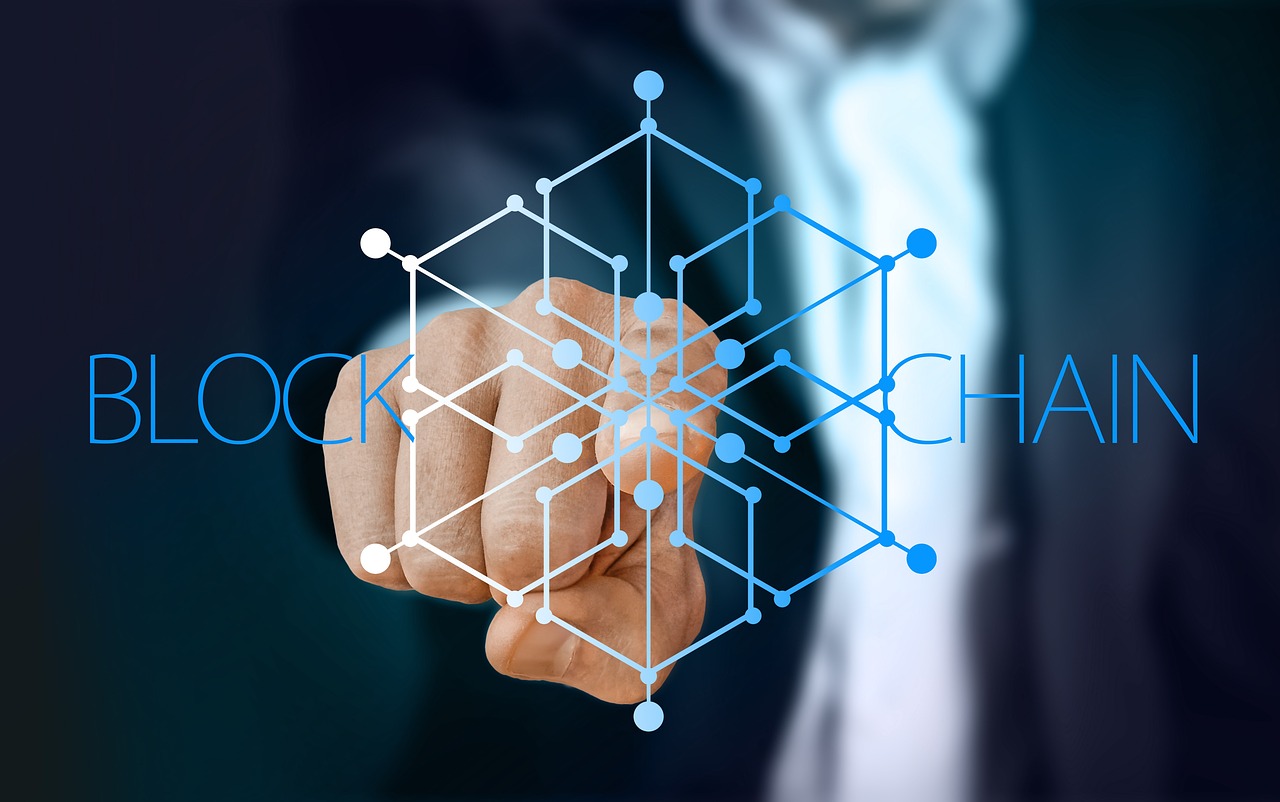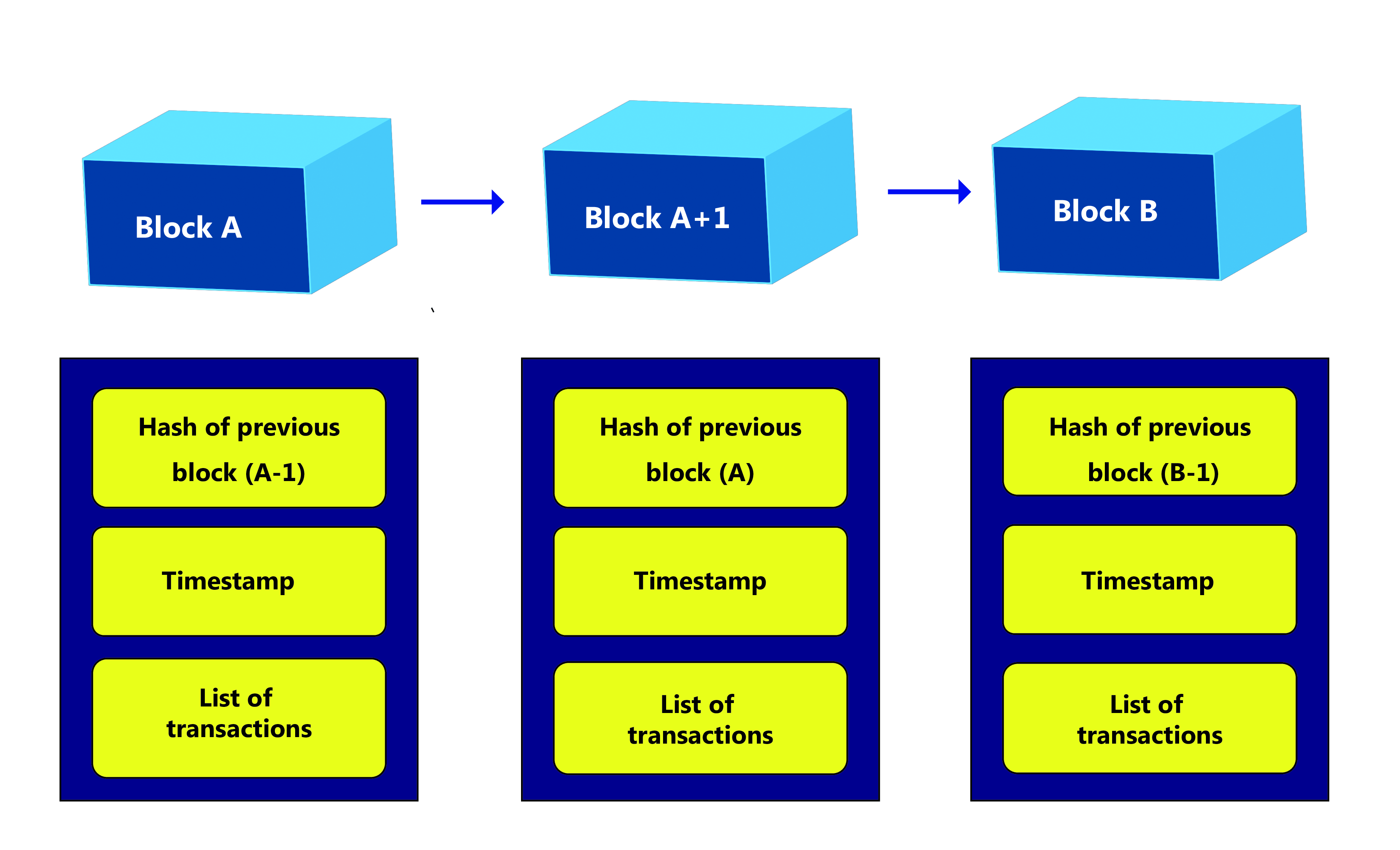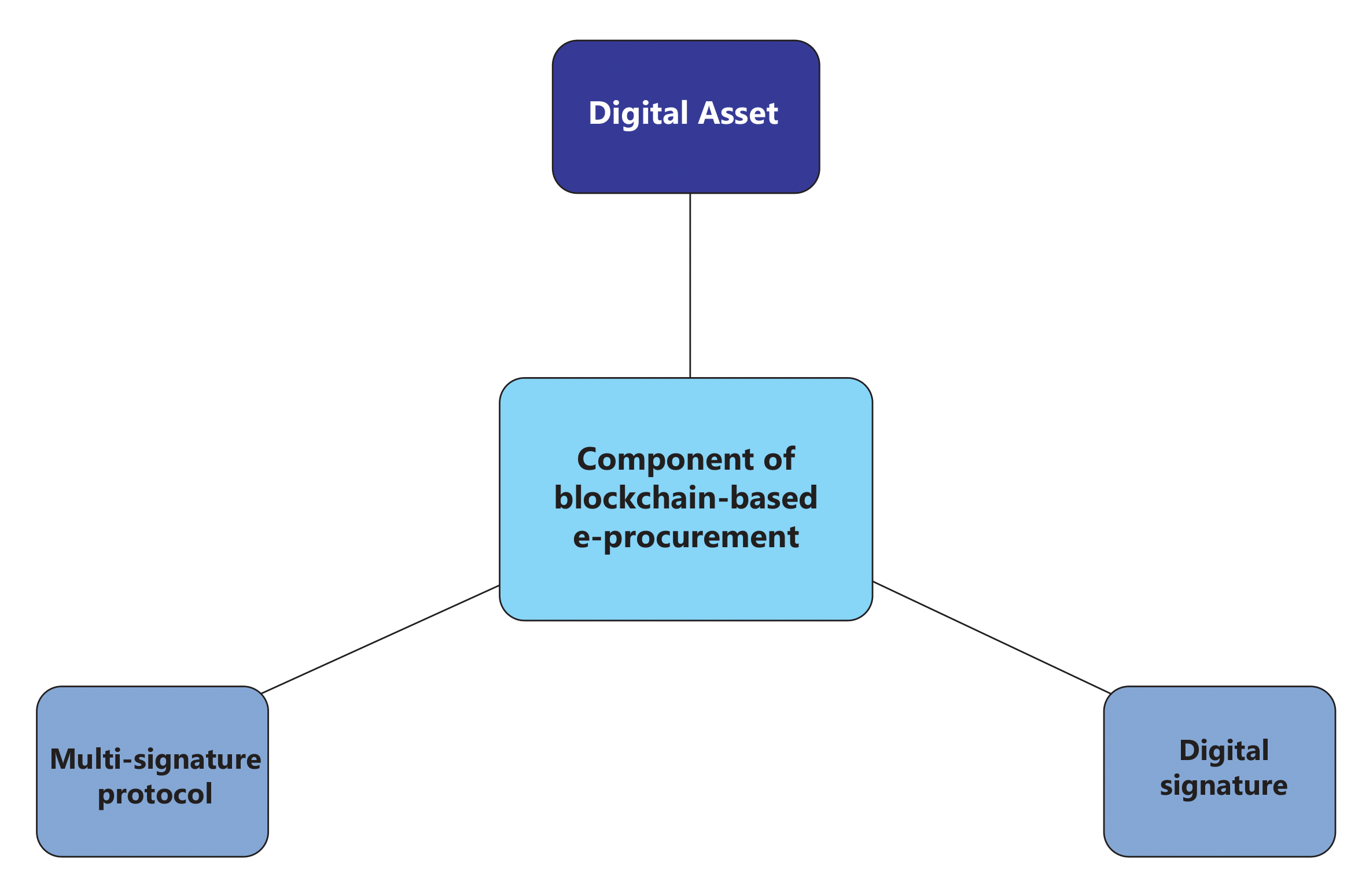7.2: Blockchain

In the new era, management is concerned with providing the right goods at the right time, with the right amount, at the right place, at the right price, and under the right conditions for the right customer. Using international standards and advanced technology, the Blockchain technology changes the traditional system and processes into a smart system.
Global Blockchain technologies are complex and face multiple uncertainties. Despite the increasing use of Blockchain in a project management context, there remain challenges. Most challenges are related to security concerns and privacy. Therefore, introducing a reliable and secure system has become the primary concern of this era. Using artificial intelligence (AI) through robotics and nanotechnologies has become famous for the fourth industrial revolution. Previously, with international and many local transactions, third parties were always involved with the payment system. On the one hand, the transaction costs a lot; on the other hand, the process consumes much time.
Nowadays, different vendors from different countries are known for their best-quality products, an important component of procurement for most development projects. To make the procurement process easy and transparent, the introduction of the smart contract and making quick payments without a third party are the challenges of the project management arena. Blockchain-based project management could bring a revolutionary change to project management.
Blockchain came into focus by resolving the payment problem of the e-commerce system through the use of Bitcoin. Bitcoin, a cryptocurrency based on Blockchain, was invented by Nakamoto in 2008. However, some recent articles have explained that Blockchain-based project management may mitigate project implementation-related problems. Therefore, it is essential to understand Blockchain technology and its working principles properly.
Integrating Blockchain Technology in Public Procurement
What Is Blockchain Technology?
Blockchain is a chain of interconnected secured blocks that can store all transactions. Welfare (2019) provides shorter and longer definitions of Blockchain in his book Commercializing Blockchain: Strategic Applications in the Real World, which are mentioned sequentially below:
Trusted and efficient way of sharing data and transaction.
Blockchain technology can be viewed as a distributed ledger of information, which maintains a continuously growing list of records, called blocks, secured from tampering and changes.
Blockchain is considered an unlimited interconnected database that records all transactional information in blocks.
Blockchain consists of two elements, transactions and blocks, as shown in Exhibit 7.2. When the user performs any task, it is called a transaction. On the other hand, blocks record all transactions. Additionally, each block contains data and the previous block’s hash value. The hash function ensures a secure transaction.

Why Is Blockchain Unique?
Welfare argued that there are a few characteristics that make Blockchain technology unique.
Trust: Nowadays, a lack of trust is a significant problem, whether it is in business, government, communities, or processes. Due to this, it takes longer to make a supply chain-related contract or to complete an audit. However, this technology ensures trust between different parties.
Transparency and openness: All the information in this system updates automatically, and it is open to all. Therefore, customers, owners, and organizations rely on the available information. Every project manager can easily imagine the benefit of a project with a transparent and open procurement system.
Immutability: The basic characteristic of a Blockchain system is that, after inserting any information, it is impossible to either alter, delete, or change it. It will update automatically after the approval of the concerned persons.
Transaction automation and smart contracts: The most crucial advantage of Blockchain is the automation of specific tasks, which is known as a smart contract. After making a smart contract, it becomes possible to enable the automation of specific tasks and transactions.
Possible Applications of Blockchain Technology in Project Management
Cloud-based applications can be accessed through local devices. Apple iCloud, Google, Amazon, Microsoft, and Oracle provide cloud-based services. Oracle also provides Blockchain technology, including a supply chain application. Oracle-based Blockchain technology will be discussed to identify the possible application of Blockchain in the project management arena.
E-Procurement/Comprehensive Administration by Oracle Blockchain Platform
E-Procurements or Comprehensive Administration
Procuring goods, works, or services is a common requirement for development projects. Awarding the contract to the lowest bidder has been found to be one of the leading causes of delaying projects. Changing data or improper evaluation can alter the ranking of bidders during tender evaluation. Furthermore, procurement is an area most known for corruption. However, introducing Blockchain for tender evaluation resolves the main issues related to procurement. Therefore, Blockchain-based e-procurement may change the project implementation process.
Components for a Blockchain-Based e-Procurements System
Three components are essential to establish a Blockchain-based e-procurement system. Thio-Ac et al. (2019) explain that those three components are a digital asset, digital signature, and multi-signature protocol, as shown in Exhibit 7.3.

The digital asset is known as the digital notarization. In traditional procurement, the procurement entity/owner informs different contractors/organizations about the requirement by publishing advertisements. The digital asset contains all the authentic documents related to the whole procurement process. A Blockchain system’s associated users will have individual private and public keys. These keys, known as digital signatures, will be used to validate a contract between two parties. The digital signature makes any document a legal document. A multi-signature protocol is used for any financial transaction. After the contractor finishes any task, the authorized group confirms it, and then the contracted money is transferred to the desired account through the multi-signature protocol.
Legal Advantages
Blockchain-based project management will provide some legal advantages to the concerned organizations of developing countries. The potential advantages are discussed below.
E-procurement: e-procurement is the leading legal advantage of Blockchain-based project management. With a blockchain-based project management system, all the procurement processes can be done online, facilitating the shift from a paper-based procurement system to a paperless/online procurement system.
On-time tendering system: The delay in the tendering process is a common problem in developing countries and often causes delays in infrastructure-related public sector projects. However, due to its automation, all the procurement steps can be completed within the assigned/allocated time. Therefore, if Blockchain-based project management is followed, the tendering process is expected to be finished within the planned time.
Transparency: A lack of transparency is one of the main reasons for delayed public sector infrastructure-related projects in developing countries. Blockchain-based project management ensures a secure and private network between the users. All the associated members of different organizations, and even top management, will be able to follow the task in real time. Therefore, the project-related tasks during the project’s processing and implementation phases will be transparent to everyone involved.
Accountability: Poor accountability is another major problem in project management. A project may fail due to poor decision-making by individuals. When something goes wrong with a project, no one takes responsibility for delaying public sector projects in developing countries. However, Blockchain is considered a digital ledger for any online transactions. Additionally, it is impossible to alter, delete, or change any Blockchain-based information without the permission of all concerned persons. Therefore, it will become straightforward to identify the accountable person/organization by whom a task has been delayed.
Secured network system: All the nodes and APIs (Application Programming Interface) need to be designed for a specific project; therefore, the Blockchain network is considered the most secure network. Furthermore, the system updates automatically. Therefore, the network will be trusted by the owner and the vendor.
Lowest bidder issue: The lowest bidder issue is one of the most common and important issues discussed by researchers. Due to a variety of reasons, the lowest winning bid increases the cost and duration of the project. However, with the Blockchain project management system, if a vendor fails to finish a project within the contracted time and cost without a valid reason, the vendor may be punished with damages, or ministries may have the authority to blacklist the vendor.
Provenance of materials: Blockchain provides the facility for vendors/contractors worldwide to participate in bidding. It opens opportunities to choose the best vendor. Furthermore, the buyer can monitor the production of materials to ensure their quality.
Managerial Advantages
Blockchain-based project management will ensure some managerial advantages, which are discussed below.
The tracking of equipment and materials: Project tracking keeps tabs on the achievement of milestones of infrastructure projects. A lot of time is spent collecting and preparing project updates as well as sending the updates to different ministries. However, Blockchain-based project management will facilitate the tracking of projects and equipment. Christodoulou et al. (2018) argued that it will also play a vital role in supply chain management. A blockchain-based tracking system will save project managers time and allow them to revise their plans based on the situation.
Faster inspection: Slow inspection is a managerial problem and one of the causes of project delays. Faster inspection is important from both the owner’s and vendor’s points of view. A fast inspection will allow for the identification of future needs and identify risks to the project, which will enhance the successful completion of the project.
Proper communication: A lack of communication between parties also hinders successful project completion. However, Blockchain-based project management will enable automatic communication between various parties and ministries within a government. Moreover, it will also offer proof of responsibility.
Financial Advantages
Blockchain-based project management will ensure financial advantages to the concerned organizations in developing countries. The potential advantages are discussed below.
Automatic and secured fund transfers through smart contracts: Automatic and secured fund transfers through smart contracts are one of the main advantages of Blockchain technology. This practice enhances trust and reduces corruption, as all the transactions are recorded permanently. Furthermore, it helps the auditor to easily trace transactions in case of fraud.
Proper cost estimation for future projects: A higher cost estimation for machinery is a common problem in developing countries. However, Blockchain-based record management retains the actual price of the equipment against the projects, which will help to estimate similar project costs in the future.
Support to ensure adequate funds for the project: Sometimes, a lack of funds delays a project. However, as the top management of various ministries and organizations is part of the Blockchain, financial planning will become easier and more accurate. It will protect a project against financial deficiencies by making it easy to identify the people responsible for the issue.
Organizational Advantages
Blockchain-based project management will ensure some organizational advantages. These potential advantages are discussed below.
Vendor management: Organizations will be able to identify the performance of the different vendors or contractors. Sometimes, vendors fail to achieve their targets on time but do not want to pay compensation, and the project suffers. All the organizations will be able to maintain the best vendor list based on their experiences.
Proper planning and estimation for future projects: Poor contract management and improper planning of projects can be considered an institutional problem that can only be resolved by improving an organization’s information management system. The proper information will help the organization plan and estimate the cost of a project properly. Gausdal et al. (2018) argued that improper data management can increase the cost of a project by up to 20%. Blockchain-based project management will not only manage a project’s data but also store the data for similar future projects.
Customer- and end-user-centric worldview: The fourth industrial revolution is changing the construction industry. The projects receiving priority are those that have the potential to deliver the highest value to the customer. Blockchain technology is playing a vital role in improving collaboration and communication in the case of a cloud-based project management system. Therefore, it is only a matter of time before organizations will need to adopt new technology, such as Blockchain, to manage projects.
Risks of Blockchain
Blockchain technology may have a few issues. Firstly, it is very difficult to change user habits. As it is a new system, people will be reluctant to use it (Welfare, 2019). Secondly, governments will benefit the most from this technology. However, if the government is not interested, there will be a problem. Finally, this technology will be used all over the world. However, the internet and telecommunication policies are different for each country. Hence, creating a standard among all providers will be challenging.
Lu et al. (2019) pointed out that although Blockchain technology has many advantages, the current operating system is still not perfect, and there are many risks. Risks can be divided into operational, cyber, and legal risks.
Operational risks mean that if Blockchain is applied to technical or social issues, it may produce unsuccessful results. Such risks include:
- A loss of data and identity
- The high transaction costs of a public Blockchain
- A lack of recipients and users
- A lack of long-term experience leading to imperfect management
- Technical problems with initial applications
- A lack of a standardized mode of operation and function and security deficiencies.
Cyber risks refer to behaviours such as fraud, which can occur due to insufficient security or design flaws. Such risks include:
- Fraud in the interface between the real world and the Blockchain world
- Hackers may attack the exchange, the user passwords may be hacked, and the funds may be transferred
- The hard fork, a blockchain protocol that renders the previous versions invalid in the block, may cause the trust of the entire network system to be questioned
Legal risks refer to illegal acts that may occur during the operation of Blockchains. These include:
- Tax evasion
- Illegal use of information
- Illegal transactions
Checkpoint 7.2
Image Descriptions
Exhibit 7.2: The image illustrates a simplified structure of a blockchain composed of three linked blocks labeled “Block A,” “Block A+1,” and “Block B.” These blocks are represented as three-dimensional blue rectangles arranged horizontally, with arrows pointing from Block A to Block A+1, and from Block A+1 to Block B, indicating the sequential flow. Below each block, there are vertical lists contained within dark blue rectangular outlines with three yellow sections inside. Each section contains specific text. The text in these sections details the components of each block, which include the hash of the previous block, a timestamp, and a list of transactions. Block A shows the hash of the previous Block (A-1), Block A+1 shows the hash of Block A, and Block B shows the hash of Block (B-1).
[back]
Exhibit 7.3: The diagram illustrates the components of a blockchain-based e-procurement system through a central flowchart. At the top, a purple rectangle labeled “Digital Asset” connects to the center component using a vertical line. The central component, depicted as a light blue rectangle, is labeled “Component of blockchain-based e-procurement.” From this central rectangle, two lines extend diagonally downward. On the left, a bluish-gray rectangle labeled “Multi-signature protocol” represents one component. On the right, another bluish-gray rectangle labeled “Digital signature” completes the diagram. The layout effectively shows the relationship and flow among these elements.
[back]
Attributions
“7.2 Blockchain” is adapted from “Blockchain Technology: Potential Applications for Public Sector E-Procurement and Project Management,” copyright © 2022 by Malik Khalfan, Neda Azizi, Omid Haas, Tayyab Maqsood, and Istiaq Ahmed in Sustainability licensed under a Creative Commons Attribution 4.0 International License, except where otherwise noted.
Exhibits 7.2 and 7.3 are adapted from “Blockchain Technology: Potential Applications for Public Sector E-Procurement and Project Management,” copyright © 2022 by Malik Khalfan, Neda Azizi, Omid Haas, Tayyab Maqsood, and Istiaq Ahmed in Sustainability licensed under a Creative Commons Attribution 4.0 International License, except where otherwise noted. These renditions copyright © 2024 Conestoga College, CC BY-NC-SA 4.0.
The multiple choice questions in the Checkpoint boxes were created using the output from the Arizona State University Question Generator tool and are shared under the Creative Commons – CC0 1.0 Universal License.
Image descriptions and alt text for the exhibits were created using the Arizona State University Image Accessibility Creator and are shared under the Creative Commons – CC0 1.0 Universal License.
A digital bridge allowing parties to securely track goods, automate tasks, and potentially reduce fraud.

